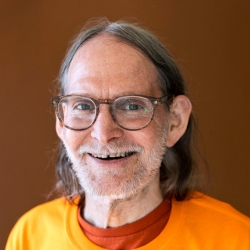The unreal has never existed. The real always exists.
The mysterious truth about both existence and non-existence is directly perceived by those with the eyes to see.
Sri Swami Satchidananda has recommended that we conclude all our meditations with a chant from the Isha Upanishad saying: “Asato Ma Sad Gamaya:” “Lead us from the unreal, asat, to the real, sat.” It is prayer for viveka, the capacity to discern the Eternal Reality that is distinct from, yet immanent in, the world of changing names and forms.
The Upanishads informs us of what is unreal: “That which is non-existent in the beginning and in the end, is necessarily non-existent in the intermediate stages also. The objects we see are illusory, though we regard them as real.” The example that is often given is that in the twilight a person mistakes a rope for a snake.
Sri Krishna uses the term “tattva-darshana” to indicate people who truly see things as they are. Here is what Sri Swami Sivananda and some of his great disciples say to help us to understand this verse:
Swami Venkatesananda: Life itself is a long dream. We are unable to realize the illusoriness of the external objects because the dream is still on. We resist the awakening influence—like the dreamer of a pleasant dream—and pull the blanket of ignorance over our faces. When it is said: “The world is unreal,” it is not suggested that we are seeing the world where nothing exists. We only mean to say that there is wrong perception: something exists (the Self or God) and we see it as something else (world). The jivanmukta is aware of both—the reality and the fact that to the unenlightened the appearance is experienced as real.
Swami Krishnananda: Dream is not an unreal phenomenon; it is a real thing. You cannot ignore it as if it not there; it is there. A dream is unreal only when you wake up: when you are actually dreaming, it is not unreal. The word “dream” does not imply unreality; it only implies that it is a condition that is transcended by another condition. It does exist; and as long as it is existing in your consciousness, it is a reality for you and will have its impact on you. Anything that happens in the world is also real.
But, there is another state above the worldly level, where you will find the whole world vanishes in a second, and the worldly reality is subsumed in another higher reality. The lesser real is not unreal—and yet, you must underline the word “lesser.” Everything is real, but only there are gradations of reality. The higher includes the lower: so we should not go on clinging only to the lower forever and ever, when the higher already includes it and transcends it. Transcendence does not mean negation of something. We are not rejecting some reality and then going to God.
Master Sivananda: The phenomenal universe does not vanish from the vision of the liberated sage. Just as the mirage appears even after the illusory nature of the water is understood, so also, the world appears for a jivanmukta even after he has attained self-realization, even after he has clearly understood the illusory nature of the world. But, just as the man who has understood the nature of the mirage will not run after the mirage for drinking water, so also, the sage who is liberated will not pursue sensual objects like the worldly-minded people – though the world appears to him.
Sri Gurudev: The permanent and the impermanent are not completely different. When we say that something changes constantly, there must be something to change. Without that something, there cannot be any changes. Then what changes? The names and forms of the primordial essence, which is always there. but it appears to be many. This basic oneness is what’s real.
The Bhagavad Gita is a 2,500 year old Sanskrit text that offers profound insight into the deeper practices of yoga. As the seeker in the Gita metaphorically prepares for the battle of spiritual transformation, he asks his teacher a series of questions. In his answers the teacher explains the many challenges and stages of the yogic spiritual path.
*Use this Sanskrit dictionary to look up words.

